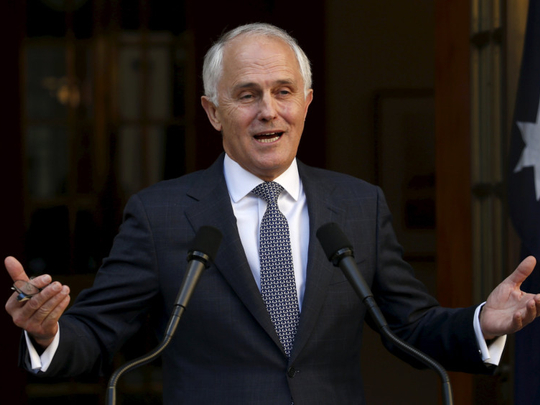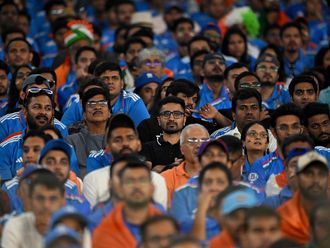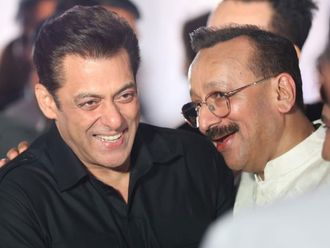
In nations similar to Australia there are two formulas for electing a parliamentary leader or presidential candidate. The first is the “party room ballot” where the elected representatives of a party meet in secret to decide their leader. The only two major parties in the Anglosphere persisting with this are the New Zealand National party and the Liberal party of Australia. The alternative method is to invite the entire lay membership of a party to cast a vote for a party’s highest office holder. We Liberals are two centuries behind the US, one century behind Canada, a couple of decades behind Britain and now behind Labor and the New Zealand Labour party in democratising our party’s most important decision.
The first contested US presidential election was in 1796. The then quite informal political parties chose their candidates for president via a “congressional nominating caucus”. The members of Congress of the respective parties met in secret and elected their presidential candidates. Within a couple of decades this practice was derided by the people as “King Caucus”. The public scoffed at a small group of elites in Washington deciding who the people could elect president.
1824 was an election year. The dominant party of the day was the Democratic-Republican and most members of Congress who identified with the party boycotted the congressional nominating caucus in response to the public’s antipathy toward the process. Those who did proceed with the caucus nominated William Crawford.
A month later, supporters of the Democratic-Republican party from inside and outside Congress meet informally in Pennsylvania — it was the founding of today’s Democratic party. They nominated the “man of the people” Andrew Jackson who announced he was the true Democratic-Republican candidate for president.
The nascent convention declared the congressional nominating caucus had “ignored the will of the people” and was a “vain hope that the American people might be thus deceived into a belief that he [Crawford] was the regular democratic candidate.” By 1832 both major parties were electing their presidential candidates via national conventions. The US conventions continued to democratise until the 1970s when both parties adopted primaries in every state which invited millions of party supporters to vote for their preferred presidential candidate.
Embraced the concept
When Canada became a nation in 1867 its political parties elected their parliamentary leaders via a party room ballot for several decades. Mackenzie King is the longest serving Canadian prime minister and he only got a start because his Liberal party reformed their rules in 1919 to elect their parliamentary leader via a national convention attended by parliamentarians and hundreds of delegates. The process worked so well that the rival Progressive-Conservative party adopted the same reform a decade later. In recent years the three major Canadian parties have all embraced the concept that all party members (not just delegates) are entitled to vote for parliamentary leader. The current Canadian prime minister Stephen Harper was elected leader of the Conservative party in 2004 in a ballot of 100,000 members.
The first British party to conduct a party room ballot was the Labour party in 1904. It would take the Conservatives until the mid-1960s to even have a party room ballot. Prior to that, a handful of leading Tories would deliberate among themselves to decide their leader.
In the early 1990s, Labour gave all party members a vote in electing their parliamentary leader, which produced their most successful leader, Tony Blair. The Conservatives followed a few years later and when David Cameron was elected leader in 2005 almost a quarter of a million party members participated in the ballot.
Some may think the membership does not know best in light of the recent election of socialist Jeremy Corbyn as British Labour leader but the party room elected the equally radical Michael Foot in 1980. Democratic election of leaders will make politics more fluid but more dynamic as well. The party room model for electing a leader is wrong because of the whopping conflict of interest. The few dozen in the party room elect the leader and that leader then appoints around a third of the party room to the executive with higher salaries and prestige. It is inevitable that votes in the party room are exchanged for promotion. It means there is consistently a disgruntled rump within the party room (ie, the unpromoted) who need just half an excuse to undermine the leader. Since 1968, leadership destabilisation campaigns have increased in frequency and bitterness.
Once every three years the Liberal party should hold a federal convention that could be televised to satellite venues across Australia. Every party member should be invited to attend and elect our federal parliamentary leaders. Those individuals who want to lead our party will need to make their case before the entire party membership and in the full glare of the media. Leadership aspirants will know once every three years they can either put up or shut-up. Membership-wide ballots to elect our parliamentary leaders would transform leadership contests from the realm of intrigue into contests that reward merit and that essential political quality — popularity.
Malcolm Turnbull announced on Monday that he was committed to the principles of enterprise, individual initiative and freedom. Let’s start in our own backyard and give every the party member the freedom to elect Australia’s parliamentary leaders. After five prime ministers in five years, this reform is urgent.
— Guardian News & Media Ltd
John Ruddick was a candidate for federal president of the Liberal Party in 2014








